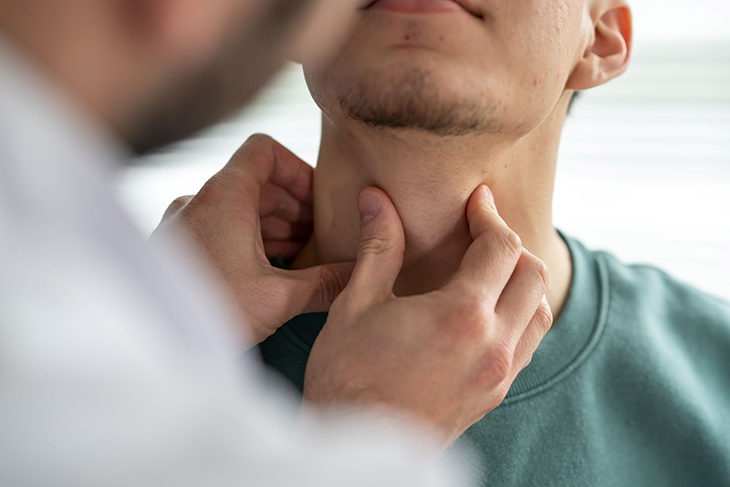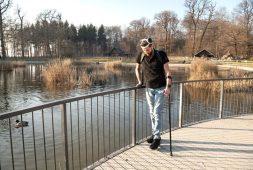
Enlarged lymph nodes larger than a grape or growth on the tonsil accompanied by ear pain may indicate the presence of throat cancer. One of the common culprits for this type of cancer is the human papillomavirus (HPV), although it doesn’t always lead to cancer and can be transmitted through kissing.
Over the last twenty years, there has been a significant increase in the incidence of oropharyngeal cancer, a type of cancer affecting the tonsils and the back of the throat. The Centers for Disease Control and Prevention (CDC)estimates that approximately 70 percent of these cases are linked to HPV, the same virus responsible for cervical and anal cancers. While some people may attribute this rise to the increased acceptance of oral sex in recent decades, experts caution that there might be other contributing factors at play.
“One of the biggest misconceptions is that HPV-associated throat cancer is all related to oral sex,” Neil Gross, MD, said. He is the director of clinical research in the department of head and neck surgery at MD Anderson in Houston as well as a specialist in HPV-associated cancers of the head and neck.
Dr. Gross explained that HPV can be transmitted through any form of intimate contact, including deep kissing, though not through just a peck on the lips.
“You will find active oral HPV asymptomatic [without symptoms] in as much as 8 percent of the population,” he shared. He also noted that only a fraction of the more than 150 strains of HPV are able to bring about cancer.
Other HPV-Related Cancers Declining
Oropharyngeal cancer is typically detected in individuals aged 64 and above, but surprisingly, approximately 20 percent of the 66,000 yearly cases in the United States occur in people younger than 55, as reported by the American Cancer Society (ACS). Interestingly, after a long period of decline, cases of oropharyngeal cancers linked with HPV have shown an increase of 1.3 percent in women and nearly 3 percent in men every year between 2015 and 2019, according to the ACS.
Contrastingly, cervical cancer, which is primarily caused by HPV (accounting for 90 percent of cases), has been experiencing a significant decrease since 2005. The reasons behind the rise in HPV-associated throat cancers while other cancer rates are falling are not entirely clear, but experts, such as Mary Roz Timbang, MD, an assistant professor of clinical otolaryngology at the Keck School of Medicine of USC in Los Angeles, believe it might be due to a combination of factors.
Unlike cervical cancer, which can be detected early through pap smear screenings and treated before developing into cervical cancer, no such screening methods exist for throat cancers. The decline in HPV-associated throat cancers in women is likely driven by vaccinations against the virus, particularly in recent years, according to the ACS.
Additionally, it’s worth noting that while people may be using protection like condoms during vaginal or anal sex, they may not be doing the same for oral sex, contributing to the transmission of HPV in some cases.
“I think there is just a lag in both understanding of the fact that unprotected oral sex is a risk factor for getting oropharyngeal cancer and people are likely more knowledgeable of using condoms for other types of sex,” Dr. Timbang said.
Once more, it’s important to note that HPV can be transmitted through kissing and doesn’t solely rely on sexual intercourse. Although earlier studies suggested a higher risk of HPV infection with multiple sexual partners, this is primarily attributed to the increased likelihood of exposure. However, adopting safe sex practices can help mitigate these risks.
“We don’t have great data on it because clinics aren’t great at asking questions about sexual habits, but some of the data we have suggest that plenty of patients who get HPV-related throat cancer have never had oral sex,” Gross explained.
Vaccines May Change the Course of HPV-Related Throat Cancers
The U.S. Food and Drug Administration (FDA) has updated its recommendations for the Gardasil 9 HPV vaccine. It is now advised that everyone should begin the two-dose vaccination series by the age of 12, with the vaccine having shown to be safe in children as young as 9. However, those who start the series after turning 14, as well as individuals who are immunocompromised, will require three doses.
Initially, the vaccine was approved for females aged 9 to 26, but in 2018, the FDA expanded its guidelines to include individuals aged 27 to 45. This expansion was necessary because HPV is more prevalent in men than in women, making it essential for boys to receive vaccination too.
According to the Centers for Disease Control and Prevention (CDC), approximately 10 percent of men and 3.6 percent of women have oral HPV, and the risk of infection increases with age due to more opportunities for exposure.
While the level of benefit the vaccine provides to individuals who may have already been exposed to various HPV strains remains uncertain, studies have confirmed that the vaccine is exceedingly safe. Therefore, getting vaccinated is still considered a wise and prudent decision, as per expert recommendations.
“By the time people get past puberty and through their twenties, they’ve likely already been exposed to many different types of HPV. That’s why the vaccine is recommended before puberty for girls and boys,” Gross said.
Gross draws comparisons between HPV and other viruses like the one responsible for shingles and chickenpox, which have the ability to remain dormant in the body for many years after initial exposure. Even after the body clears the virus, its impact on the cells can persist for a considerable period.
“It used to be, everybody got chickenpox and then a certain portion of people will develop shingles later in life. We don’t know why, but it likely has something to do with a chink in the armor of the immune systems,” Gross said. HPV most likely works in the same method. While many can pass the virus without developing health issues at all, some will eventually develop cancer that’s connected to the infection they had.
The Need to Get HPV Vaccine For 30- and 40-Year-Olds
Vaccination in individuals over the age of puberty, who were not vaccinated before and were exposed to HPV early in life, can serve as a protective booster in their thirties or forties. This vaccination can be particularly beneficial if their natural immunity is declining, enhancing their defense against potential future HPV exposures.
“I don’t really see a downside to getting it, particularly if you think you may be at higher risk,” Gross said — for instance, if you expect to have new sexual partners sometime in the future.
Throat Cancer Symptoms
According to Gross, HPV-associated throat cancer primarily targets individuals in their fifties or sixties due to the cancer’s development occurring several decades after virus exposure. However, the demographics have shifted, leading to an increasing number of cases in even older patients nowadays.
“Unlike cervical cancer, where the pap smear has greatly reduced the incidence of cervical cancer, we don’t have that for the throat,” Gross explained. “So there is nothing to do but be aware of the early symptoms, live a healthy lifestyle, and avoid risky behaviors.”
As per the CDC, oropharyngeal cancer can be attributed to smoking and chewing tobacco as well. Indications of throat cancer consist of a painless lump in the neck or a lymph node that persists in size, resembling a plump grape or larger. Should there be a growth on the tonsil, particularly leading to ear pain, it is advisable to seek medical attention promptly.
“Be aware of these signs because it sneaks up on folks and they’re often late to get treatment,” Gross advised.



